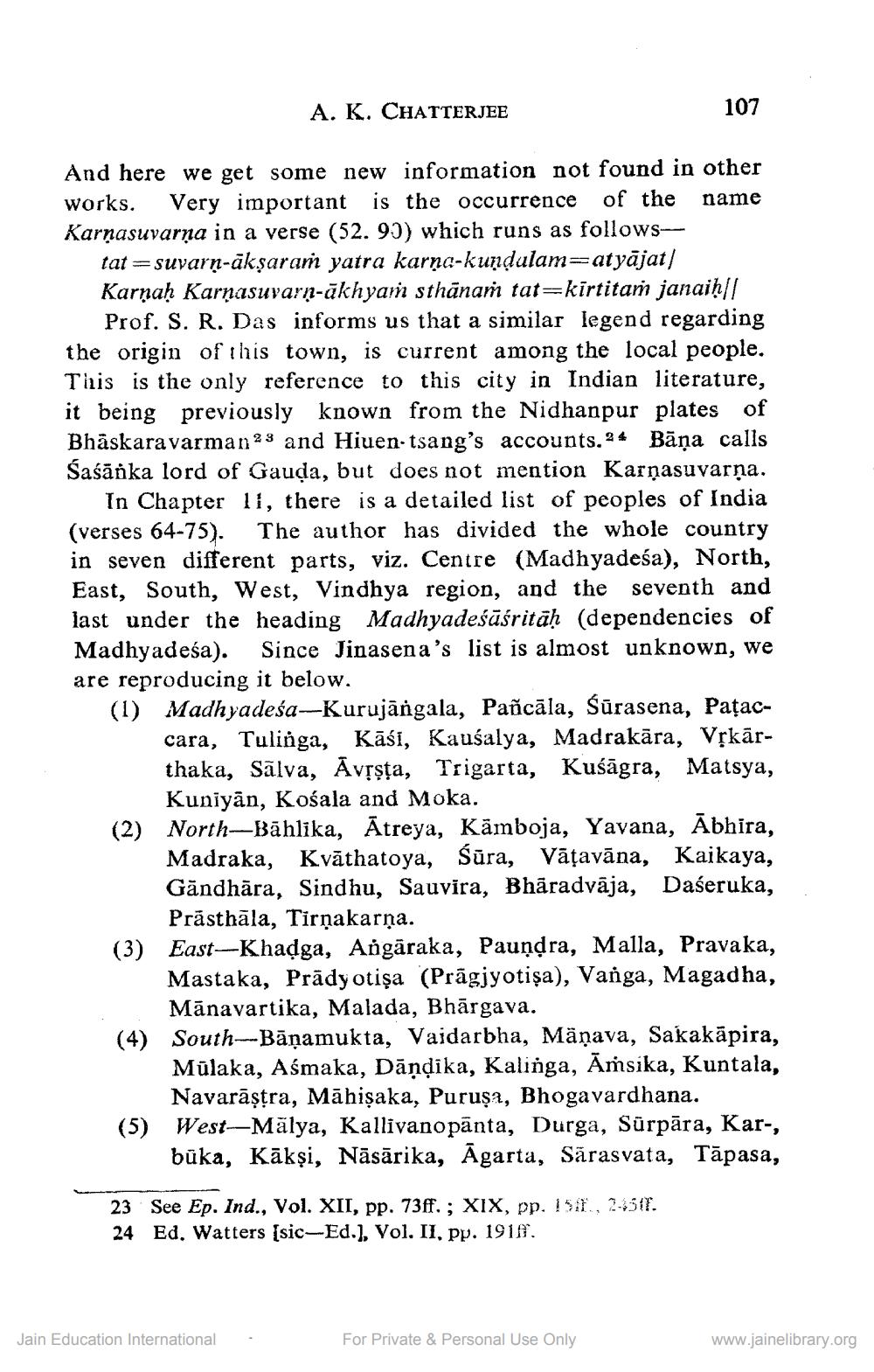________________
A. K. CHATTERJEE
107
And here we get some new information not found in other works. Very important is the occurrence of the name Karņasuvarna in a verse (52. 90) which runs as follows--
tat=suvarn-ākşaram yatra karņa-kundulam=atyājat/ Karnaḥ Karņasuvarn-ākhyaṁ sthānam tat=kirtitam janaiḥ||
Prof. S. R. Das informs us that a similar legend regarding the origin of this town, is current among the local people. This is the only reference to this city in Indian literature, it being previously known from the Nidhanpur plates of Bhaskara varman 23 and Hiuen.tsang's accounts. 2* Bāņa calls Śaśāöka lord of Gauda, but does not mention Karņasuvarna.
In Chapter 11, there is a detailed list of peoples of India (verses 64-75). The author has divided the whole country in seven different parts, viz. Centre (Madhyadeśa), North, East, South, West, Vindhya region, and the seventh and last under the heading Madhyadeśāśritāḥ (dependencies of Madhyadeśa). Since Jinasena's list is almost unknown, we are reproducing it below. (1) Madhyadeśa-Kurujāngala, Pañcāla, Śūrasena, Pațac
cara, Tulinga, Kāśi, Kausalya, Madrakāra, Vņkārthaka, Sālva, Avşșța, Trigarta, Kuśāgra, Matsya,
Kuniyān, Kośala and Moka. (2) North—Bāhlika, Atreya, Kamboja, Yavana, Ābhira,
Madraka, Kvāthatoya, Śūra, Vāțavāna, Kaikaya, Gāndhāra, Sindhu, Sauvira, Bhāradvāja, Daseruka,
Prästhāla, Tirņakarņa. (3) East-Khaďga, Angāraka, Pauņạra, Malla, Pravaka,
Mastaka, Prādyotişa (Prāgjyotişa), Vanga, Magadha, Mānavartika, Malada, Bhārgava. South--Bāņamukta, Vaidarbha, Māņava, Sakakāpira, Mülaka, Aśmaka, Dāņờika, Kalinga, Āṁsika, Kuntala,
Navarāșțra, Māhișaka, Puruşa, Bhogavardhana. (5) West--Mälya, Kallivanopānta, Durga, Sürpāra, Kar-,
būka, Kākşi, Nāsārika, Āgarta, Sarasvata, Tāpasa,
(4)
23 See Ep. Ind., Vol. XII, pp. 73ff.; XIX, pp. 151, 7-517. 24 Ed. Watters (sic-Ed.), Vol. II, pp. 1918%.
Jain Education International
For Private & Personal Use Only
www.jainelibrary.org




